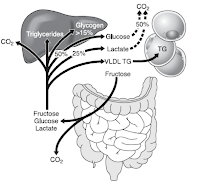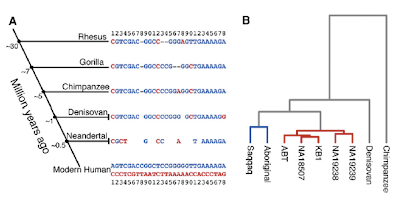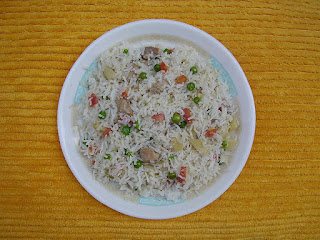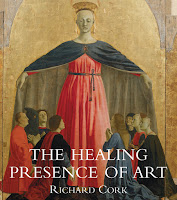 |
| Fructose metabolism. Ref: Tappy & Ka 2010. |
Sugar is a hot topic these days. Evidently, it's also a touchy topic. I've been a little amazed at some of the responses (both positive and negative) received since my first
rant post about media reporting unfairly that
hummingbird fuel was "toxic". There clearly exists a continued need for education about the state of the evidence as it stands now surrounding sugar and its implications on health.
As a follow-up to my
report of the "Sugar Showdown" at Experimental Biology -- a debate where scientists voiced clear dissatisfaction with the sensationalism surrounding sugar both in news reports and in the scientific literature -- I decided to seek out greater insight by an expert who was at the event.
John Sievenpiper, M.D., of St. Michael's Hospital, University of Toronto, brings a valuable perspective to our understanding of sugar. He is the lead author of three recent systematic reviews and meta-analyses evaluating fructose's effects on body weight, blood pressure, and glycemic control in humans from randomized controlled feeding trials.
With only very light edits made (for clarity) to my transcribed interview with him by telephone, I give you the take of Dr. Sievenpiper on fructose in his own words:
DD: What did you think of the debate in San Diego? Do you think it helped clear up confusion among the scientists about the state of evidence on sugar and, particularly, fructose? JS: I absolutely did. It was a very useful debate just because I think the debate to this point has been dominated by people like Dr. Lustig. I have a lot of respect for and certainly am on friendly terms with Dr. Lustig. We have had very cordial and academic discussions in email and when I've spoken with him. We obviously disagree where the data lies. Unfortunately, I think he's done a better job at knowledge translation than the people on the other side of the argument. Certainly, I'd say I’m not on the other side of the argument. I'm in the middle of the argument trying to make sense of it. Having both sides better represented was far more balanced than what came out of his two-million hit sensation on YouTube and a lot of the media coverage that has resulted from that of Gary Taubes and some others as a result of that video.
DD: Where do you think there's still confusion? Where is the real scientific debate?JS: The confusion really lies in that a lot of this debate has been underpinned by the animal literature and ecological studies without recognizing the flaws and translating that information into real-world human scenarios. The problem has really been with someone like Lustig who can run through the pathways at very impressive clip and can convince someone that, OK, there's so much biological plausibility, so it must be true. People aren't asking the question, "Well is it? What happens when we do look at humans? Do we actually see this signal?"
What we're finding with our meta-analyses is that, no, we don't see that signal. Or, we do where energy is part of the equation and seems to be dominant. I think that is the disconnect that has really come because of the use of the animal data and ecological analyses. It's very seductive. Because they do show reproducible, consistent effects of a harmful signal.
DD: You're saying that signal isn’t something that was found in humans per your meta-analyses on isocaloric trials in humans?JS: Correct. That was the reason we did the meta-analyses in the first place. We didn't set out an
a priori hypothesis that fructose doesn't do these things. In fact, our hypothesis would've been "Well, everyone's talking about it. The animal data is suggestive of an adverse effect of fructose." If anything, our hypothesis was that there's going to be an adverse effect.
We set out to do these meta-analyses to answer that question – whether that phenotype that we see in animals that can be so robustly reproduced, the signal we're seeing from ecological data (where we are looking at populations), and whether that actually translates into human models where we actually feed people and control for all extraneous variables.
We decided to use the gold standard or highest level of evidence in nutrition or, really, in most fields -- which is controlled trials; and, in nutrition, is controlled dietary feeding trials. We wanted to apply the best tools we have, which was systematic review and meta-analyses tools to synthesize that knowledge and information to try to answer the question.
Is it true? What we found was that it wasn't. We looked at bodyweight -- which is the
Annals [of Internal Medicine] data that you're aware of -- in each case there was no effect of fructose when it was isocalorically exchanged. There was no adverse effect on bodyweight,
blood pressure, or
uric acid. We do see a very consistent and strong effect on bodyweight when fructose is providing excess energy.
DD: The strong effect on bodyweight was in comparison to other carbohydrates?JS: That's comparison to a control diet. The fructose is providing excess energy. Is it the fructose you're adding? Is it the energy from fructose? Those are actually difficult to interpret. What we found is that the energy is dominant when you look at neutral, positive, or negative energy balance studies. We found that as long as fructose was isocalorically exchanged, there was no effect. Fructose wasn't having an effect beyond energy. Our conclusions looking were that energy appears to be dominant in particular case to bodyweight. The bodyweight increase we saw was predicted by the energy was consumed. We would say the same thing, although we didn’t have as many studies, for uric acid. In our
lipid analyses, we find the same thing again. Energy is dominant.
DD: Let me ask a question about those hypercaloric trials in relation to animal studies and the flaws of which you speak. Recently, for example there was what I call the "sugar makes you stupid" study [covered here]. When I read it, I found it was simply a hypercaloric trial where rats were given fructose in addition to a control diet, which led to insulin resistance. JS: I think you hit the nail on the head. There is really the disconnect between animal carbohydrate metabolism and human carbohydrate (or fructose) metabolisms. One of my criticisms of using animal data is that they feed at superphysiological levels at 60 percent energy. No one is consuming that.
The 50th percentile for intake in the United States is 49g per day, which is just a little less than 10 percent per day of energy from fructose. We're talking of a six-fold difference in what people are really consuming and what these models are feeding. If you look at even the 95th percentile for intake of fructose in US population from using NHANES data, the 95 percentile for intake for NHANES for fructose consumes 87g of sugar or little less than 20 percent energy. (NHANEs is intake data as opposed to disappearance data, what the USDA collects, which is just availability of sugars, but tends to overestimate because it doesn't account for waste; it looks at how much went onto the market; when you only fill your coffee half full with that sachet of sugar and throw away the rest, it doesn't count for how much was thrown away). So these models are feeding even three-fold, if we're generous, compared to the 95th percentile of the population are consuming, which is really super-physiologic. Just based on the feeding pattern and paradigm of those models, you can't equate them.
On top of that, we know that if you look at comparative physiological studies, animals metabolize carbohydrates differently than do humans. In animals on a high-carbohydrate diet not providing excess energy, you find that
de novo lipogenesis [conversion by the liver to fatty acids] is anywhere from 50 percent or higher. They basically make fatty acids for at least 50 percent of the carbohydrate [consumed]. De novo lipogenesis accounts for at least 50 percent carbohydrate. In humans, it is very, very hard under isocaloric (neutral energy) conditions, let alone in overfeeding conditions, to push that beyond 10 percent or even 20 percent.
A lot of the outcomes that have been implicated, have really centered on this hypothesis of de novo lipogenesis. I have a really big problem when people want to extrapolate from an animal study where their feeding (1) superphysiological amounts of fructose and (2) in a model where the metabolism is not the same as in humans – it's very different. It's bad for rats or mice (you name your study and adverse effect of fructose), but it doesn't mean that's the case in humans. Again, that's the reason why I think we need good human data and that's why we wanted to synthesize the human data. We do have almost 50 controlled feeding studies on different questions related to cardiometabolic control.
DD: At Experimental Biology, Dr. Rippe argued that the amount of de novo lipogenesis in humans was pretty negligible in response to fructose eaten normally in the U.S. Can you comment on what he shared? JS: That is correct. If you actually look at the animal studies where you feed them high fructose, you make this beautiful metabolic syndrome phenotype (where they have very high TGs, low HDL, hypertension, obesity, and insulin resistance). We don't see that in humans. It doesn't hold true because when you actually look at carefully conducted studies.
Dr. Rippe was actually quoting Luc Tappy's
work. He has put together a really excellent review of his own work and that of others who've done careful stable isotope tracer studies where you can label acetate, fructose, and different metabolites. You can see where fructose is going and where fructose is ending up. What he's found is that with a fructose load 50 percent goes to glucose, about 25 percent goes to lactate, greater than 15 percent and up goes to glycogen, the remainder would be oxidized directly [going to CO2 through the TCA cycle], and a small portion contributed to
de novo lipogenesis. I can't remember what Dr. Rippe had on his diagram, but even as low as, let's say, 3 percent, it is really quantitatively non-significant. In animals,
de novo lipogenesis is quantitatively significant. It doesn't appear in humans with high-carbohydrate feeding and the same is true even under high-fructose feeding. We see this very robust
de novo lipogenesis in animals. We don't see it in humans.
That I think is a problem because this is one of the underpinning mechanisms by which antagonists like Dr. Lustig and others are hanging their arguments in terms of why we're seeing an increase in overweight and obesity, metabolic syndrome, diabetes, and the metabolic syndrome phenotype in general that fructose is thought to elicit.
DD: Why do you think Lustig continues to argue that de novo lipogenesis makes fructose intake a metabolic danger?JS: When you look at someone like Rob Lustig, who, again, I actually I have a lot of respect for because I think he's well-intentioned and he's sincere about his belief. But I think his passion and enthusiasm in this area are clouding his judgment a bit. You could say the same for Gary Taubes or anyone who has kind of taken a very extreme position on the data.
If you look at the data carefully, sort out the wheat from the chaff, and look for the well-controlled data to drill down on some of these mechanisms -- OK, let's look in humans and not animals; let's look under basic normal energy balance conditions, and let's use the best or most elegant tools we have, which are stable isotope tracers -- this is the answer you get: 50 percent glucose, 25 percent lactate, greater than 15 percent to glycogen. These may vary a bit just based on the rest of the background diet and activity level of the organism or human in this case. But in general, this is the fate of fructose.
It's not what Dr. Lustig and others would have you believe -- massive influx into de novo lipogenesis to hugely raise triglycerides, overweight, obesity, metabolic syndrome. You don't see it through this mechanism. We just don’t see the signal of increase in bodyweight or even for triglycerides; only the very high doses.
DD: What about a possible benefit from fructose? For example, in one of your meta-analyses you found a benefit on glycemic control. JS: The
study you're quoting, or the meta-analysis we did, was looking at so-called small or catalytic doses of fructose at a level that would be obtainable from fruit (so, basically, less than 10g per meal). We took that to mean 36g per day (meaning 10g per meal and two snacks with 3g each; like 30 percent of a meal). That's how we came up with eligibility criteria for that meta-analysis. That was just a snapshot that looked at low doses of fructose.
We saw this benefit for hemoglobin A1c (HbA(1c)) -- almost a 0.5 percent reduction. That's a 0.5 percent absolute reduction (not a proportion) similar to what you would see with antidiabetic agents at the lower range of efficacy. And, we saw that without adverse effects on triglycerides, body weight, insulin, and uric acid. So, we concluded that there was an overall a net metabolic benefit from these low doses of fructose at a level really that is obtainable from fruit.
That correlated quite nicely with what we saw in a very large glycemic index trial we published in patients with type 2 diabetes. What was the most important low-glycemic index food item that best predicted reduction of HbA(1c)? It was low-glycemic index fruit. The level of fructose that you would've obtained with the most commonly consumed
low-glycemic index fruit (apples, it turns out) would be 10g per serving. So it fit nicely with this idea of this catalytic dose of about 10g per meal. And in that study we saw an identical 0.5 percent reduction of HbA(1c) units. So, further confirming that there may be something to fruit.
DD: How will a metabolic benefit from fructose change the debate?JS: Part of the issue is about balancing the argument. I think we can learn a lot from someone like Robert Lustig because he has done the knowledge translation piece so well. Whether he's done it intentionally or not, he has brought a lot of attention to his issues. On the other hand, we’ve done -- at least the people with a more balanced view -- a very poor job at trying to communicate that balanced view. Yes, there may be some signals [that fructose has an adverse effect] or, no, there aren't, or it may be conditional on energy. With all the nuances, we’ve done a pretty bad job at communicating it as opposed to the simple message of "Fructose at any level is poison." We're trying to say it depends on the dose, it depends on the energy, and that’s a hard message to communicate. We've been dwelling on harm. We’ve been saying "Well, it doesn’t support harm except where there is excess energy."
The nice thing about the glycemic control outcome is that we can actually talk about benefits. We can switch that argument back on its heel in a way to say, "Yeah, there's issues around harm. We need to really find out where the dose response lies." Now, we can start talking about a benefit. We can start talking about a level of fructose at a dose and where do we see a benefit without adverse effects which we may see at very high doses. And we can go back to moderation and even moderation having a benefit. As Dr. Klerfeld put so nicely [quoting
Paracelsus, "The dose makes the poison"], the toxin is determined by the dose. Even water is toxic if you drink too much of it.
DD: In response to Dr. Lustig in Nature,
you commented about fruit fructose. Similarly, you commented to me at the symposium in San Diego that you had a concern that unwarranted fears of fructose would lead to reduced intake of fruit.JS: Again, part of the reason Dr. Lustig and Gary Taubes are so good at getting this message out is that it's so one-sided, very easy, very palatable message. They've oversimplified it so much where there is no level of safe intake, that it is a poison, that it should be just like tobacco (to paraphrase what he says in his video), and that it should be regulated accordingly. He doesn't say it so much in his
Nature piece.
But he doesn't actually talk about dose, where the dose response lies, and he doesn't address fruit, which may be a healthy form (I think should be an uncontroversially healthy form) of fructose. The problem with these arguments and these very extreme positions is that we don't talk about dose and we don't talk about the form of fructose.
That's the danger -- that people will say that fruit is a source of fructose and I won't consume fruit because it may induce obesity, metabolic syndrome, and so on. It's not just the lay public that may take this message to heart but professionals. We had an endocrinologist here at our hospital at University of Toronto who was telling patients not to consume fruit because of the fructose content precisely because of all the commentaries, editorials, and reviews that Rob Lustig had been publishing. The danger is that people will take the message to extreme. They'll start saying "I should cut these things out (apples, pears) to cut my fructose exposure." That is a really wrong-headed approach. When I talk to Dr. Lustig on the side, I do get a sense that he does think that there's a dose threshold, but it doesn't come out in the writing, or the YouTube piece.
DD: I've heard about similar situations happen where people are cutting out fruit and taking Lustig's message to the extreme. Dr. Sievenpiper, you've given me, us, people a lot to think about. I appreciate your time.
Note: When I reached out to Dr. Sievenpiper, he was gracious enough to point me to a just-published "lovely, balanced, well-written paper" by respected physiologist Luc Tappy of Université de Lausanne, in Switzerland. The paper, Dr. Sievenpiper said, summarized much of Dr. Tappy's own take after the event in San Diego and would help answer more questions. (The open-access paper can be found here.)














.jpg)